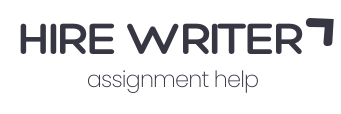1.When interviewing a patient with neurogenic communication disorder, which of the following should
1.When interviewing a patient with neurogenic communication disorder, which of the following should you do as a clinician? Select all that may apply. All or nothing grade. Use everyday language instead of technical words Be overly sympathetic Treat the patient as incompetent Review the patient’s records to get an update on the patient’s personal and medical history Introduce yourself All the following are reasons to test a patient with neurogenic communication disorder, except For insurance to pay for your services Deciding a diagnosis Measuring recovery Assessing degree of patient’s impairment Determining treatment’s effectiveness A structured approach to making clinical decisions that involves diagnosis, testing, prognosis and treatment is known as: Evaluation approach Medical decisions Clinical method Complete assessment As a clinician, you read in a patient medical record that the location of the patient’s insult/injury was above the medulla. Which of the following should you expect to see in the patient? Impairment on the side of the body opposite the area of brain injury Impairment on the same side of the body as the area of brain injury Impairment at the upper half of the body only Impairment at the lower half of the body only Memory about past events that are specific to a place and time is known as: Prospective memory Semantic memory Episodic memory Long-term memory Which of the following are known to provide the mass and framework for the brain? Nerve cells Glial cells Myelin sheaths Axons Although it is actually pink in nature due to blood supply, the brain cortex is more commonly known as gray matter due to the lose of the blood supply during autopsy. True False The cerebrospinal fluid surrounds the central nervous system in which of the following places? Arachnoid space Supra-arachnoid space Subarachnoid space Pre-arachnoid pace Which of the following does not belong? Extrapyramidal system Vestibular-reticular system Pyramidal system Homunculus The innermost covering for the central nervous system is the: Pia mater Dura mater CSF Arachnoid membrane According to the World Health Organization International Classification of Functions (WHO-ICF), execution of a task in an individual’s current environment is known as: Participation Body functions Personal factors Activity Which of the following is a measure of quality of life of a person with neurogenic communication disorder? Select all that may apply. Functional Communication Profile Communication Activities of Daily Living ASHA Functional Assessment of Communication Skills for Adults Communicative Effectiveness Index Which of the following may be on a treatment team for an adult with a neurogenic communication disorder? Select all that may apply. Speech-Language Pathologist Dietician Neuropsychologists Physiatrists Neurologists Which of the following factors should be considered when determining the patient’s potential response to treatment? Select all that may apply. Patient’s physical status Patient’s right to refuse treatment Trial treatment Patient’s motivation Which of the following professionals is responsible for adjusting the diets of a patient with neurogenic disorders to correct nutritional deficiencies? Nurse Speech-Language Pathologist Dietitian Corrective Therapist When a clinician uses quantitative measures of the number of accurate responses, prompts/cues levels, and efficiency of responses to measure a patient’s performance during a therapy session, which of the following is the clinician doing? Measuring activity-level measures of treatment efficiacy Measuring patient’s progress at the participation-level Measuring the patient’s progress at the impairment-level Measuring the patients decision-making at the activity-level The concept that human beings have a limited amount of processing resources available to carry out mental operations is known as: The Concept of Mental Resources The Concept of Resource Allocation The Concept of Treatment Processes The Concept of Task Difficulty The process whereby a clinician works with the patient with neurogenic communication disorder to progressively imitate social conventions, elicit requests by the clinician, naturalistic prompts, and role-playing to resemble natural conversations is known as Sequential modification Indiscriminable contingencies Loose training Mediating generalization Which of the following is a standardized test for aphasia? Select all that may apply. Western Aphasia Battery Minnesota Test for Differential Diagnosis of Aphasia Boston Diagnostic Aphasia Examination Porch Index of Communicative Ability Which of the following variables will affect the accuracy with which a patient with neurogenic communication disorder names presented stimuli? Select all that may apply. The frequency of word occurrence Context within which the stimuli is presented The number of syllables in the word Whether the stimuli is a naming or action item The saliency of the picture stimuli When a clinician decides to treat auditory comprehension in a patient with a neurogenic communication disorder because the clinician views perception as a core deficit in that population, this clinician is assumed to use what type of intervention philosophy? Fundamental processes approach Functional approach Relative level of impairment approach Activity approach Maintaining attention while doing a specific type of work (e.g., a quiz) over a substantial period of time is known as Focused attention Sustained Attention Selective Attention Tonic Attention The rules, behavior, conventions, and norms about language use in daily life is known Semantics Pragmatics Psycholinguistics Syntax Which of the following does not belong? Anterior cerebral artery Temporal cerebral artery Posterior cerebral artery Middle cerebral artery Which of the following cranial nerves has a motor function. Select all that may apply. CN 8 CN 12 CN 3 CN 6
******CLICK ORDER NOW BELOW AND OUR WRITERS WILL WRITE AN ANSWER TO THIS ASSIGNMENT OR ANY OTHER ASSIGNMENT, DISCUSSION, ESSAY, HOMEWORK OR QUESTION YOU MAY HAVE. OUR PAPERS ARE PLAGIARISM FREE*******."

